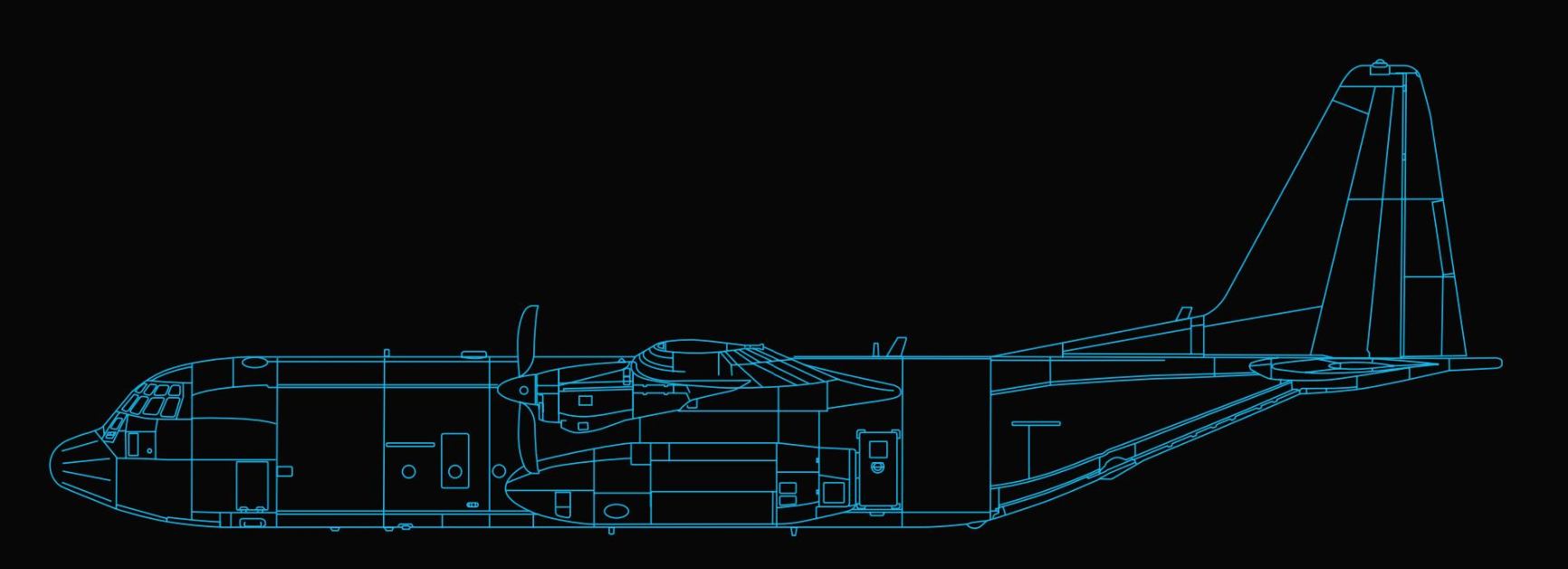While it may look the same to some, the C-130J-30 is a very different aircraft to the C-130H. The most obvious differences are the six bladed composite prop and an increase of 4.5 metres in the cargo compartment length (two additional pallet stations), but looking further there are a lot of other changes and new technology that makes this a very different aircraft.

CREW COMPOSITION
Due to technology, the C-130J-30 will be operated with two pilots and two loadmasters.
ENGINES
New generation AE2100D engines that offer greater power and overall performance with reduced fuel consumption. Controlled via a Full Authority Digital Engine Control system. 24% more power on take-off, 19% more thrust at cruise and 15% lower fuel consumption.
MATERIALS
While not a composite aircraft, the C-130J-30 utilises composite materials in areas where beneficial to do so – the propellers and some flight controls.
INTEGRATION
All systems and equipment is interconnected, even to the extent of having electronic circuit breakers.
DOMESTIC TECHNOLOGY
The C-130J-30 comes with a toilet (no longer a bucket) and a microwave oven in the galley.
HEAD UP DISPLAY
Each pilot has a full digital Head Up Display (HUD) that displays all key information while allowing the pilots to keep their heads up and looking outside the aircraft. The full cockpit, including the HUD is night vision imaging system compatible.
- Five new Super Hercules to join Air Force fleet
- New Zealand – C-130J Aircraft - Media Release
- New Zealand Cleared to Procure Five C-130J Super Hercules Aircraft
- Reaching for the sky – Super Hercules delivery in 2024
REGULATORY COMPLIANCE
The block 8.1 variant of the C-130J-30 comes fully compliant with all modern airspace regulatory regulations and modern navigation and communication standards.
ELECTROOPTICS / INFRARED
The new generation Wescam MX-20, high definition, digital system with Thermal Image, Colour Continuous Zoom, Daylight Spotter, Short Wave Infrared Spotter and Laser.
RANGEFINDER
Can be displayed and controlled at both the co-pilot station and at the augmented station.
WIDE BAND CIVILIAN SATCOM
Using the Honeywell Jetwave system via the INMARSAT system, to achieve high speed data transfer. Combined with wifi distribution, this will allow information dissemination to the passengers and will also permit transmission of video and data to ground units.
ENHANCED CARGO HANDLING SYSTEM
Provides for improved airdrop accuracy, loading and loadmaster safety. Electrically actuated locks and restraints, underfloor winch, loadmaster console (integrated into aircraft systems) and flip-to-stow roller conveyors.
MILITARY SYSTEMS
Full communication suite, military grade navigation systems, armour, role equipment, Link-16, enhanced self-protection system and Large Aircraft Infrared Counter Measures to support military roles and tasks.
EXPLOSION SUPPRESSANT FOAM
Fitted in all tanks (including aux tanks) to reduce risk of fuel tanks exploding if aircraft encounters small arms fire when operating in high threat environments.
SIMULATOR
A full motion, Level D simulator that will also serve as the procedural trainer and maintenance trainer. Totally electrically actuated and has positions for the two pilots, loadmaster, augmented crew station and up to three instructors.
ENHANCED LIFE CENTRE WING SECTION
A strengthened and improved design allows the aircraft to be operated and flown for 75,000 hrs before any work is required on the centre wing section. Improved structure and systems to allow ramp operations up to 250 knots.




